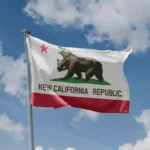Curly hair is as diverse as the individuals who wear it. From loose waves to tight coils, curls come in various shapes and sizes, each with its unique characteristics and care needs. Understanding the different types of curls is essential for proper hair care, styling, and embracing the natural beauty of your locks. This guide will walk you through the main types of curls, providing insights into their features and tips for maintaining them.
Understanding Curl Types
Curly hair is typically classified into four main types, with subcategories within each type to further specify the curl pattern. These categories range from Type 1 (straight hair) to Type 4 (coily hair). Since we’re focusing on curls, we’ll explore Types 2, 3, and 4, which encompass wavy, curly, and coily hair, respectively.
Type 2: Wavy Hair
Type 2 hair is characterized by its gentle wave that forms an “S” shape. It lies between straight and curly hair, offering versatility in styling. Type 2 hair is further divided into three subcategories:
- Type 2A: This hair type is fine and thin, with a subtle wave that is easy to straighten or curl. It usually lacks volume and frizz, making it relatively low-maintenance.
- Type 2B: These waves are more defined, forming a slightly more prominent “S” shape. Type 2B hair tends to be frizzier and may require more effort to style and manage.
- Type 2C: This hair type has the most defined waves, often bordering on loose curls. It is typically thicker and more prone to frizz, requiring products to enhance and define the waves.
Care Tips for Wavy Hair:
- Use lightweight, frizz-control products to enhance waves without weighing them down.
- Avoid heavy oils and butters that can flatten the waves.
- A diffuser attachment on your hairdryer can help to dry your hair while maintaining wave definition.
Type 3: Curly Hair
Type 3 hair is characterized by well-defined, springy curls that form a spiral shape. This hair type tends to be more prone to frizz and requires more moisture to maintain its shape and shine. The subcategories within Type 3 are:
- Type 3A: This hair type has loose, large curls that are typically shiny and have a well-defined “S” shape. Type 3A hair is prone to frizz and can lose definition without proper care.
- Type 3B: These curls are tighter and more voluminous, forming ringlets. Type 3B hair is usually denser and may require more moisture and styling products to prevent frizz and maintain curl definition.
- Type 3C: This hair type has the tightest curls within the Type 3 category, with corkscrew-like ringlets that are densely packed. Type 3C hair is prone to dryness and requires a regular moisturizing routine to keep the curls healthy and bouncy.
Care Tips for Curly Hair:
- Regularly deep condition to keep curls hydrated and prevent frizz.
- Avoid brushing curly hair when dry; instead, use a wide-tooth comb or fingers when the hair is wet and conditioned.
- Opt for sulfate-free shampoos and lightweight gels or creams to define curls without crunch.
Also read: Crochet Hairstyles: A Versatile Trend in Hair Fashion
Type 4: Coily Hair
Type 4 hair is characterized by its tight, dense curls or coils. This hair type is the most fragile and prone to dryness, as the natural oils from the scalp have difficulty traveling down the hair shaft. Type 4 hair is further divided into:
- Type 4A: This hair type has soft, well-defined coils that form tight S-shaped curls. Type 4A hair retains moisture better than the other subtypes, but still requires regular hydration.
- Type 4B: These curls are less defined, with a “Z” shape pattern that bends at sharp angles. Type 4B hair is prone to shrinkage and requires moisture-rich products to maintain elasticity and prevent breakage.
- Type 4C: This hair type has the tightest curls, with a more delicate and fragile texture. Type 4C hair often lacks defined curls and experiences significant shrinkage. It is highly prone to dryness and breakage, making moisture and gentle handling key to its care.
Care Tips for Coily Hair:
- Use heavy creams and oils to lock in moisture and prevent breakage.
- Protective styles, such as braids or twists, can help reduce manipulation and maintain hair health.
- Regularly detangle with a wide-tooth comb and plenty of conditioner to minimize breakage.
Embracing Your Curl Type
Understanding your curl type is the first step toward embracing your natural hair texture and achieving healthy, beautiful curls. Each curl type has its unique needs, and learning to care for your specific type can lead to better hair days and greater confidence.
- Hydration: Regardless of curl type, hydration is key. Curly and coily hair tend to be drier, so regular conditioning, deep conditioning treatments, and leave-in conditioners are essential.
- Gentle Handling: Curly hair is more prone to breakage, so handle it with care. Use wide-tooth combs or fingers to detangle, and avoid harsh brushes that can cause frizz and breakage.
- Product Selection: Choose products that cater to your specific curl type. For example, wavy hair may benefit from lightweight mousses, while coily hair might need heavier creams and oils to retain moisture.
- Protective Styling: Protective styles such as braids, twists, and buns can help reduce manipulation and breakage, especially for Type 4 hair.
- Regular Trims: Regular trims are essential for maintaining healthy curls. Trimming every 8-12 weeks can prevent split ends and keep curls looking fresh.
Conclusion
Types of Curls come in many shapes and sizes, each with its own beauty and challenges. By understanding your curl type and adopting the right care routine, you can enhance your natural texture, reduce frizz, and enjoy healthy, vibrant hair. Whether you have loose waves, tight curls, or coily hair, embracing your unique curl pattern is the key to unlocking the full potential of your hair.







